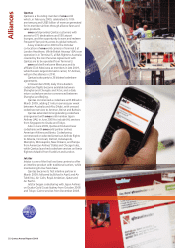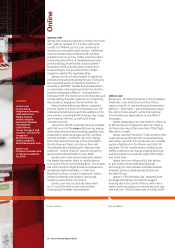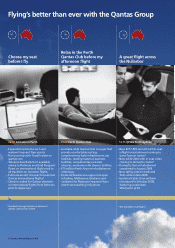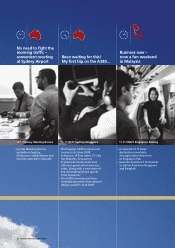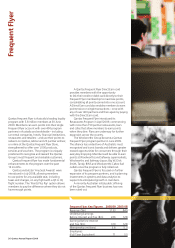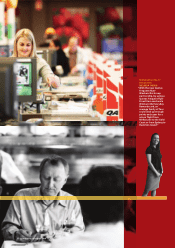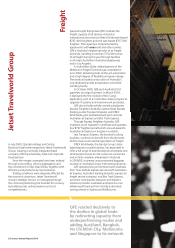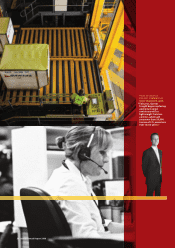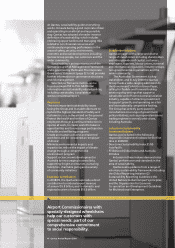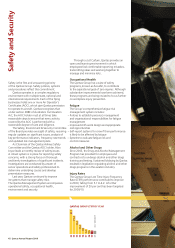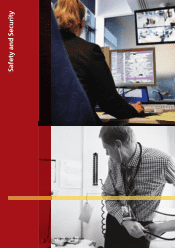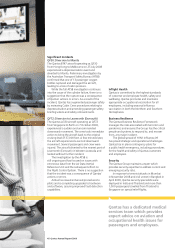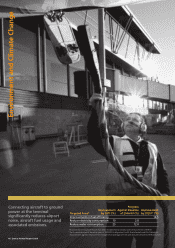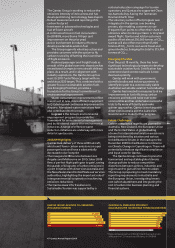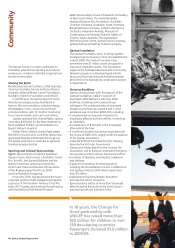Qantas 2009 Annual Report Download - page 44
Download and view the complete annual report
Please find page 44 of the 2009 Qantas annual report below. You can navigate through the pages in the report by either clicking on the pages listed below, or by using the keyword search tool below to find specific information within the annual report.
Safety is the first and unwavering priority
of the Qantas Group. Safety policies, systems
and procedures reflect this commitment.
Qantas operates in a complex regulatory
environment with multiple state, national and
international requirements. Each of the flying
businesses holds one or more Air Operator’s
Certificates (AOC), which give Qantas permission
to operate its aircraft. Qantas recognises that
under section 28BE of Australia’s Civil Aviation
Act, the AOC holder must at all times take
reasonable steps to ensure that every activity
covered by the AOC is performed with a
reasonable degree of care and diligence.
The Safety, Environment & Security Committee
of the Board provides oversight of safety, receiving
regular updates on significant issues, analysis of
key performance indicators, frequency rate trends
and updated risk management plans.
As Chairman of the Qantas Airlines Safety
Committee and the Qantas AOC holder, Alan
Joyce leads a monthly review of safety issues.
A robust system is in place for reporting safety
concerns, with a strong focus on thorough
and timely investigations of significant incidents.
Investigations are conducted by a team of
senior operations and safety professionals to
determine underlying causes and develop
preventative measures.
Last year, Qantas continued to improve
its systems that manage safety risks.
The Qantas Management System encompasses
operational safety, occupational health,
environment and security.
Through a Just Culture, Qantas provides an
open and learning environment in which
employees feel comfortable reporting mistakes,
transmitting ideas and working together to
manage and minimise risks.
Occupational Health
The Qantas Group has a suite of safety
programs, known as be safe!, to contribute
to the aspirational goal of zero injuries. Although
substantive improvements have been achieved,
these programs are being revised to focus further
on workplace injury prevention.
Fatigue
The Group’s comprehensive fatigue risk
management system includes:
– Policies to establish personal, management
and organisational responsibilities for fatigue
management
– Improved shift-work design and appropriate
rest opportunities
– Self-report systems for crew if their performance
is likely to be affected by fatigue
– Systems to evaluate fatigue risk and
control measures
Alcohol and Other Drugs
Since 2003, the Drug and Alcohol Management
Program has provided for employees and
contractors to undergo alcohol and other drugs
training and testing. Sustained lobbying by Qantas
resulted in legislation regulating alcohol and other
drugs programs in the aviation industry.
Injury Rates
The Qantas Group Lost Time Injury Frequency
Rate (LTIFR) performance continued to improve
in 2009, falling from 5.1 to 4.2. A further
improvement of 20 per cent has been targeted
for 2009/10.
Safety and Security
QANTAS GROUP LTIFR BY YEAR
02 31.7
03 23.7
04 17.4
05 12.2
06
07
08 5.1
09 4.2
09 4.0 TARGET
7.9
6.3
42 Qantas Annual Report 2009


